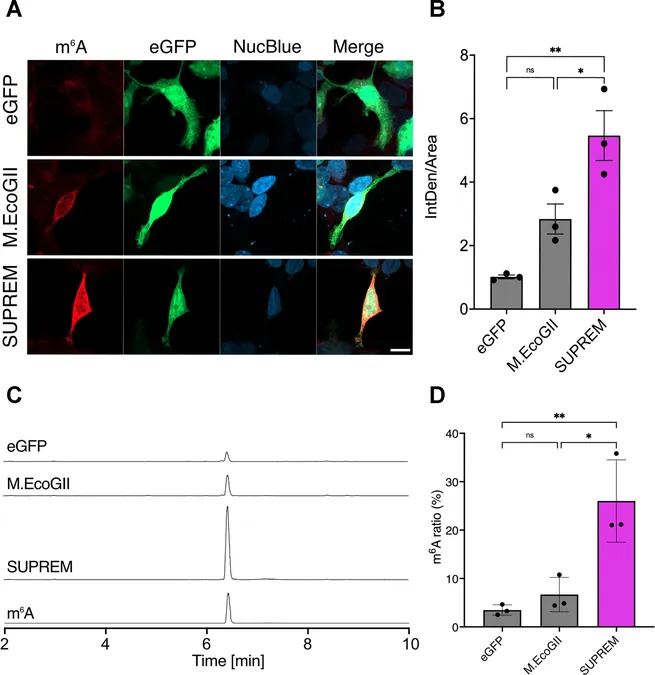
Unlocking the Secrets of RNA: Scientists Revive Ancient Enzyme to Transform Biological Research!
2024-12-02
Author: Wei Ling
Reviving Ancient Enzymes for Modern Discoveries
Researchers at the Okinawa Institute of Science and Technology (OIST) have made groundbreaking strides in RNA biology by resurrecting an ancient form of a bacterial enzyme. This newly engineered enzyme boasts remarkable capabilities to chemically modify RNA, opening the door to a plethora of research opportunities.
Innovative RNA Methyltransferase Development
In their latest publication in Nucleic Acids Research, the Protein Engineering and Evolution Unit at OIST introduces an innovative RNA methyltransferase that will provide vital insights into the role of RNA modifications within cells. These modifications are not just trivial; they are essential for RNA stability, translation efficiency, and cellular localization, which can significantly influence overall cell health and the progression of various diseases.
Research Leadership and Methodology
Leading the research is Yoshiki Ochiai, a dedicated Ph.D. student in the Protein Engineering and Evolution Unit. His research focused on enhancing the RNA methylation activity of a less specific bacterial DNA methyltransferase known as M.EcoGII. By employing advanced bioinformatics techniques, the team traced the evolutionary history of this enzyme to determine whether its ancestors were primarily RNA or DNA methyltransferases.
Discovery of SUPREM
After successfully inferring the sequences of these ancestral proteins, the OIST team conducted rigorous testing on several candidates to identify one with superior RNA methyltransferase activity. To their excitement, they discovered a powerful variant dubbed the SUPer RNA EcoGII Methyltransferase (SUPREM), which showed a strong preference for RNA modification.
Significance of SUPREM
What sets SUPREM apart? Its unique ability to selectively target RNA, coupled with high methylation activity and efficacy inside mammalian cells, positions it as a promising candidate for developing cutting-edge tools to study RNA modifications across a variety of diseases. This could lead to groundbreaking advances in understanding diseases where RNA modifications play pivotal roles, potentially unveiling new therapeutic targets.
The Future of RNA Research
As RNA research continues to evolve, the resurrection of SUPREM not only marks a significant step forward in the field but also raises intriguing questions about the ancient proteins that paved the way for modern biochemical processes. Scientists are particularly keen to explore how these tools can be utilized to navigate the complexities of RNA biology further, potentially transforming the way we understand cellular mechanisms and disease pathways. The future of RNA research has never looked brighter!


 Brasil (PT)
Brasil (PT)
 Canada (EN)
Canada (EN)
 Chile (ES)
Chile (ES)
 España (ES)
España (ES)
 France (FR)
France (FR)
 Hong Kong (EN)
Hong Kong (EN)
 Italia (IT)
Italia (IT)
 日本 (JA)
日本 (JA)
 Magyarország (HU)
Magyarország (HU)
 Norge (NO)
Norge (NO)
 Polska (PL)
Polska (PL)
 Schweiz (DE)
Schweiz (DE)
 Singapore (EN)
Singapore (EN)
 Sverige (SV)
Sverige (SV)
 Suomi (FI)
Suomi (FI)
 Türkiye (TR)
Türkiye (TR)